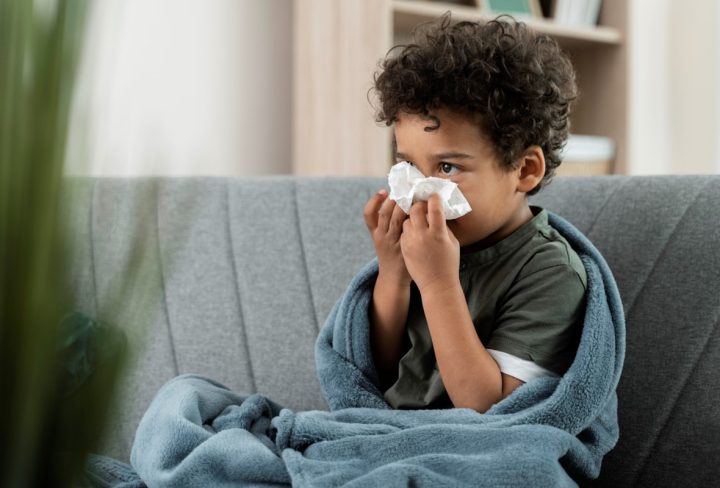Influenza, commonly known as the flu, is a contagious respiratory illness caused by influenza viruses. While flu can affect people of all ages, children, especially those younger than 5 years old, are particularly susceptible to its severe complications. Pediatrics flu requires special attention and care to ensure the well-being of children. In this blog, we will explore the causes, symptoms, complications, prevention, and management of flu in pediatric patients.
Causes and Transmission:
The flu is caused by influenza viruses, which can be categorized into different types (A, B, and C). Type A and B viruses are the primary causes of seasonal flu outbreaks. Influenza spreads through respiratory droplets when an infected person coughs, sneezes, or talks, and another person inhales those droplets. It can also spread by touching surfaces contaminated with the virus and then touching the face.
Symptoms: Flu symptoms in children are like those in adults but may be more pronounced. Common flu symptoms in pediatric patients include:
- High fever (often above 101°F or 38.3°C)
- Cough and sore throat
- Runny or stuffy nose
- Headache and body aches
- Fatigue and weakness
- Vomiting and diarrhea (more common in younger children)
Complications: Children are at a higher risk of developing complications from the flu compared to adults. Potential complications of pediatric flu may include:
- Pneumonia: Influenza can lead to bacterial or viral pneumonia, a serious condition that affects the lungs.
- Ear infections: Flu increases the likelihood of developing ear infections, which can cause pain and temporary hearing loss.
- Sinusitis: Influenza may contribute to sinus infections, causing facial pain and congestion.
- Dehydration: Fever, decreased appetite, and vomiting can lead to dehydration, particularly in younger children.
- Exacerbation of chronic conditions: Flu can worsen existing medical conditions, such as asthma or diabetes.
Prevention: Preventing the flu is crucial, especially for children who may experience more severe symptoms. The following measures can significantly reduce the risk of flu:
- Annual vaccination: All children over six months of age should receive the flu vaccine each year. The vaccine is particularly important for high-risk groups, including young children, those with chronic conditions, and pregnant women.
- Good hygiene practices: Encourage frequent handwashing with soap and water for at least 20 seconds, especially before eating or touching the face. If soap is unavailable, using hand sanitizer with at least 60% alcohol is an alternative.
- Respiratory etiquette: Teach children to cover their mouth and nose with a tissue or their elbow when coughing or sneezing, and to dispose of tissues properly.
- Avoid close contact: Limit exposure to individuals showing flu-like symptoms and encourage children to stay away from crowded places during flu seasons.
Management and Treatment: If your child develops flu symptoms, it is essential to seek medical advice promptly. The doctor may recommend the following for managing pediatric flu:
- Rest and hydration: Ensure your child gets plenty of rest and drinks fluids to prevent dehydration.
- Over-the-counter medications: Acetaminophen or ibuprofen can help reduce fever and alleviate discomfort, but always consult a healthcare professional before administering any medication to children.
- Antiviral medications: In some cases, the doctor may prescribe antiviral medications to reduce the severity and duration of flu symptoms. These medications are most effective when started within 48 hours (about 2 days) of symptom onset.
Pediatrics flu is a concerning respiratory illness that requires careful attention and management.


